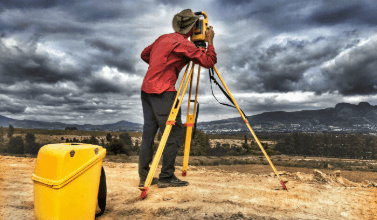Risk Register and Dust Monitoring: Why Australian Businesses Must Take a Proactive Approach

In Australia, workplaces tend to use risk management as a box ticking exercise to comply with regulations instead of something that can strategically minimize the risks of harm. One uncontrollable area remains dust exposure which continues to get ignored despite having considerable impacts on worker health, environmental compliance, and business sustainability over the long term.
A proper risk register should go beyond monitoring the obvious safety risks such as slips, falls, and machine-related injuries to include as well environmental or occupational health risks such as monitoring dust exposure. However, many businesses do not incorporate dust risks in their risk register and as a result:
🔹 Expose workers to long term health risks due to airborne contaminants.
🔹 Attract regulatory penalties or court cases for non-compliance with WHS regulations.
🔹 Get workflow interrupted from legally bounded air quality control compliance.
Rather than viewing and treating risk registers as compliance checklists, Australian businesses ought to actively use them to monitor and control hazards associated with dust, air, and environmental exposure.
Why It’s Important to Include Dust Monitoring in the Risk Register
Construction, mining, agriculture, and production industries cause significant amounts of dust in the air, which poses a threat to worker’s respiratory health, air quality, and could lead to heavy fines. Even poorly ventilated office spaces with dirty office equipment can worsen the chances of dust-related health issues.
Still, many organizations don’t include dust exposure in risk registers as a monitoring board, leading to:
❌ Incorrect worker exposure risk assessments for long durations of time.
❌ Increased health risk due to lack of action to mitigate dust hazard delays.
❌ Failure to preemptively control dust related issues before they become legal matters.
Registers must include dust-monitoring information so businesses can:
✅ Distinguish where workers are most likely to suffer exposure and injury.
✅ Record and evaluate dust levels over a period of time in compliance with legal air quality standards
✅ Establish proactive control measures to ventilation, PPE, and dust suppression.
How to Incorporate Dust Monitoring into a Risk Register
1. Consider Dust Exposure a Workplace Safety Concern
Many companies in the mining, construction, and manufacturing industries treat dust control as an issue of environmental compliance rather than a matter of workplace safety. The reality, however, is that dust in the air is a major threat to worker health, contributing to:
🔹 Silicosis and lung diseases due to chronic exposure to fine dust of silica.
🔹 Respiratory problems and loss of productivity from poor quality of air indoors.
🔹 Poor visibility due to dust clouds leading to more accidents in the workplace.
By monitoring and controlling dust exposure levels in the risk register, businesses can:
✔️ Allocate risk ratings to work zones depending on the concentration of dust present.
✔️ Formulate strategic action plans designed to reduce the dust exposure risk before it becomes dangerous.
✔️ Ensure compliance with WorkSafe Australia’s dust exposure limits to avert legal consequences.
2. Update the Risk Register Using Live Monitoring Dust Data
Most risk registers are updated every year or half a year, but dust exposure risk changes every day. A real-time dust monitoring system can provide:
📊 Live monitoring of dust in the air and automatically flagging risks as soon as they arise.
🚨 Automated warnings when dust concentration surpasses predetermined thresholds.
📉 Data-driven recommendations that allow the business to change ventilation, PPE, and cleaning practices.
Real-time dust monitoring is integrated into the risk register so that companies can make more proactive, data-driven choices to safeguard workers and maintain compliance.
3. Connect Dust Exposure Risks to Business Risks
The harmful effects of dust do not end with the health of the workers, but extend to business productivity, insurance costs, and environmental compliance.
If businesses track dust monitoring data, they can also evaluate the company’s risk in more comprehensive ways, such as:
🔸 Financial risk – Increased expenditure associated with compensatory claims and mounting premiums due to dust-related health issues.
🔸 Reputation risk – Stakeholder and media backlash because of failure to manage the environment properly.
🔸 Regulatory risk – Legal and monetary penalties incurred due to violation of Australian air quality standards.
Broadening the scope of dust monitoring data ensures that businesses go beyond compliance audits to minimize adverse consequences in the long-term.
4. Adopt Dust Control Measures and Evaluate Their Efficiency
A good risk register should not just capture risks; it should assess the effectiveness of risk mitigation actions taken. To achieve better overall control, businesses should:
✔️ Document control measures: Dust extraction systems, suppression sprays, PPE, etc.
✔️ Delegate responsibilities for the implementation of dust control strategies to particular teams or individuals.
✔️ Analyze the trends of dust reduction over a predefined period of time to determine if the measures taken are effective.
Leveraging dust monitoring with risk management allows a business to make strides in improving air quality and safety at the workplace.
The Consequences of Neglecting Dust Monitoring In A Risk Register
Those businesses that do not account for dust exposure within their risk registers face heavy challenges in the long term such as:
❌ Increased compensation claims from employees who are victims of dust-related illnesses.
❌ Failure to comply with air quality standards leading to operational shutdowns.
❌ Higher insurance premiums due to increased dust-related incidents at workplaces.
Conversely, organizations that actively seek to monitor dust exposure are able to enjoy the following:
✅ Reduced absenteeism – people are not as likely to miss work due to being exposed to respiratory health risks.
✅ Compliance with WorkSafe Australia policies improves.
✅ Improved corporate sustainability due to corporate citizenship.
The Future of Risk Management: Compliance and Dust Monitoring Powered by AI
1. AI Risk Registers for Real-Time Risk Management
With the development of AI risk management solutions, businesses can now:
🤖 Change risk registers instantly by monitoring dust data in real time.
📈 Estimate future dirt exposure risks relative to the level of activity in the workplace environment.
📊 Create compliance audit reports automatically and hand them out without doing paperwork.
2. New Restrictions on Dust Exposure in Australia
The Australian government is considering new policies aimed at mitigating the impact of silicosis and other occupational lung diseases, which include:
🔹 Setting new lower thresholds for silica dust and particulate matter.
🔹 Imposing stricter fines for companies that do not manage and mitigate dust risk factors.
🔹 Mandating high-risk industries to implement automated dust measurement systems.
Companies that adopt dust risk monitoring today will be prepared for compliance in the future.
Final Thoughts: Reconsidering Risk Registers to Incorporate Dust Monitoring
A proactive compliance and a barebones approach to risk management, where an organization tracks regulatory and obvious physical threats, is ineffective. For Australian businesses to improve worker safety, compliance, and mitigate long-term risks, they must:
✔️ Claim that exposure to dust is an important key risk within risk registers.
✔️ Incorporate real-time dust monitoring analytics on risk adjustments.
✔️ Consider dust exposure as part of larger financial, environmental, and governance risks.
✔️ Measure how effective dust mitigation strategies are.
By integrating changes to dust monitoring and updating risk registers, businesses will prevent fatalities instead of managing health risks, resulting in safer workplaces and sustainable operational continuity.




